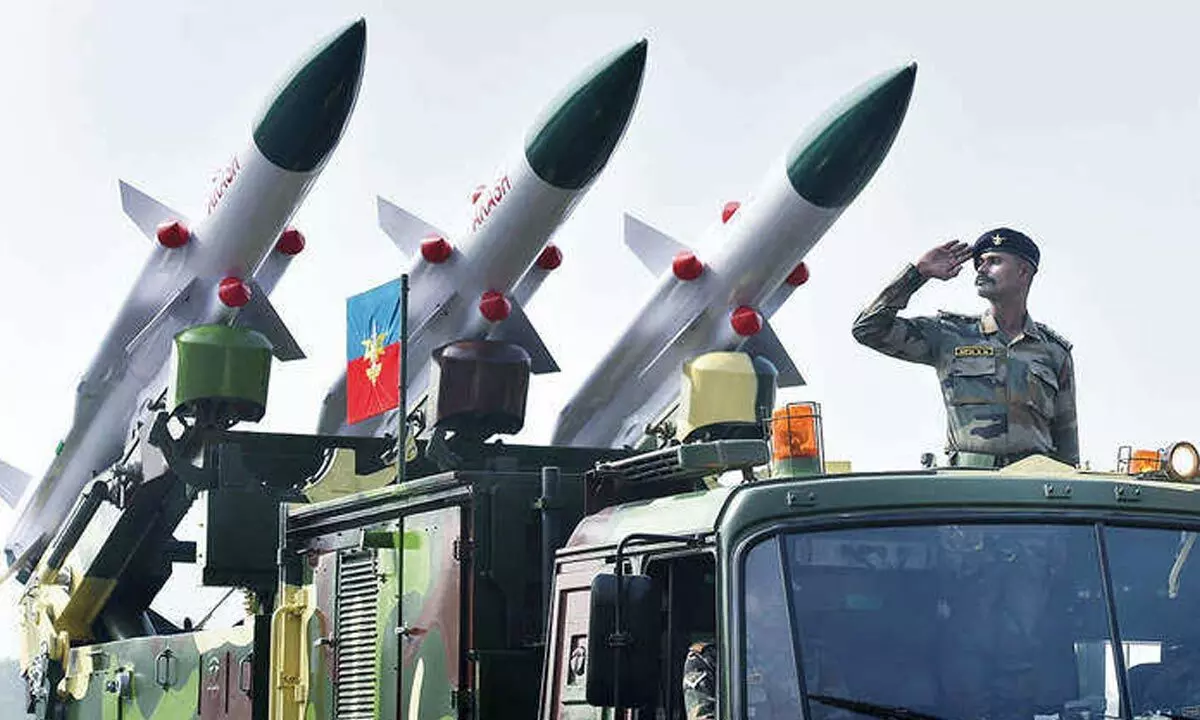Self reliance in defence shouldn't compromise on cutting-edge tech
Aatmanirbhar Bharat Abhiyaan can be translated as self-reliance and self-sufficiency, and it highlights the importance of reducing external dependence. The term ‘Vocal for Local’ was also introduced to encourage the purchase of indigenous products so that the local industry can flourish.
image for illustrative purpose

Aatmanirbhar Bharat Abhiyaan can be translated as self-reliance and self-sufficiency, and it highlights the importance of reducing external dependence. The term 'Vocal for Local' was also introduced to encourage the purchase of indigenous products so that the local industry can flourish. The Aatmanirbhar Bharat as an umbrella concept aims to achieve a technology-driven economy, build cutting-edge infrastructure and utilise the strength of the country's demographic profile to generate economic growth.
The defence sector was recognised as an important area in which there is a lot of scope for being Aatmanirbhar or self-reliant. The defence sector is one of the strategic sectors of the Indian economy that has the potential for tremendous growth because of the large talented pool of skill sets in terms of human resources and large-scale modernisation requirements of the armed forces. The sector will help in strengthening the economy by creating employment opportunities and reducing the import burden.
India's arms import during 2015-19, for instance, accounted for nearly 10 per cent of the world's total. India's arms import though decreased by 33 per cent between 2011-2015 and 2016-2020. Self-reliance in defence and security needs is critical to reducing India's dependence on other countries for urgent procurement in times of exigency.
Our defence forces require timely and cost effective acquisition of defence equipment to enable them to meet any challenge to country's security. The government has promised a time-bound defence procurement process, overhauling trial and testing procedures and establishing a professional project management unit. The significance of these measures is underscored by the fact that over the past five years, the Indian government has approved over 200 defence acquisition proposals, valued at over Rs 4 trillion, but most are still in relatively early stages of processing. Of course, this delay now provides the opportunity to re-examine them and to prioritise those with indigenous research and development. The CDS could also examine them from a tri-service angle, to avoid redundancy of capacities across the services.
The government has rightly clarified that self-reliance would not be taken to overzealous extremes. The thrust for indigenous research and development will coexist with the import of cutting-edge military technologies to obviate near-term defence vulnerabilities.
It is also imperative that when we import weapon systems, we should plan for the ammunitions and spares for them to be eventually manufactured in India so that we are not driven to seek urgent replenishments from abroad during crises. The same goes for repair, maintenance and overhaul facilities and, at the next level, the upgrade of weapons platforms.
According to an order issued by the Ministry of Commerce and Industry, the FDI through government route has been increased to beyond 74 per cent. Foreign investments in the defence sector shall be subject to scrutiny on grounds of National Security. In line with the collective vision of Aatmanirbhar Bharat, amendments will enhance self-reliance in defence production, while keeping national interests and security paramount.
The unwillingness of foreign companies to share high-end knowhow with entities over whom they have no majority control has been cited as a potential deterrent. Reputation in this industry counts for a lot - price and performance guarantees being important - and this is also an area which they shy away from unless they have the authority, in terms of end-to-end control, to address such issues.

